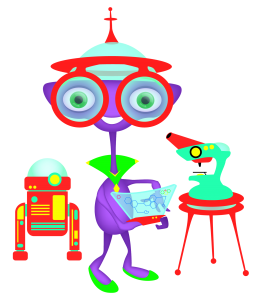Designed around CLI’s research and the Children’s Museum Houston’s Afterschool Science, Technology, Engineering, and Math (A’STEAM) curriculum.
Children spend up to 80% of their time in informal learning environments like home, afterschool and summer programs, libraries, museums, or science centers. So, afterschool experiences are a powerful time to spark children’s interest in STEM. Consider ways that you can use these evidence-based practices to ignite an early interest in STEM that will last a lifetime.
STEM Online Learning
Chapters of STEM program information and units of A’STEAM activities can be implemented as a complete program or flexibly adjusted for supplemental use with existing programs. Use for free to increase interest in STEM and introduce STEM pathways to participating children.
Chapters
Inspire children through the use of hands-on STEM activities!
A’STEAM Activities
Our collection of A’STEAM activities is organized by units with educator supports tailored for delivery to grades K to 2nd and 3rd to 5th. Multiple activities are included in each of the six units: Aerodynamics, Astronomy, Chemistry, Earth and Water, Engineering, and Magnetism.
Aerodynamics Unit
Balloon Rockets
Students will launch a balloon rocket to better understand Newton’s first and third Laws of Motion.
Film Canister Rocket
Students will launch a film canister rocket to better understand Newton’s first and third Laws of Motion.
Flight of the Straw Gliders
Students will create a straw glider to better understand the four forces behind flight: lift, drag, weight, and thrust.
Magnus Gliders
Students will make a magnus glider to better understand the four forces of flight: lift, drag, weight, and thrust.
Rubber Band Helicopters
Students will create a rubber band helicopter to observe the forces behind flight: lift, drag, weight, and thrust.
Astronomy Unit
DIY Eclipse Viewers
Students will create an eclipse viewer so that they can safely view a solar eclipse.
Galaxy in a Bottle
Students will model a spiral galaxy by filling a water bottle with cotton balls, paint, and glitter.
Meteorites and Crater Pits
Students will make a meteorite using a foam ball and clay. To understand the impact meteorites have on the formation of planets, they will make a crater pit.
Moon Exploration
Students will create a model of the Moon to understand what moon phases, eclipses, and craters are. They will also map Moon landings.
Planetary Scale and Distance
Students will demonstrate the scale distance of the universe by walking out each planet’s correct astronomical unit (AU).
UV Bead Constellations
Students will create constellations with UV beads and observe how the beads change when exposed to the energy of the Sun.
Chemistry Unit
Density Columns
Students will observe how different liquids have different densities. They will then observe that solids can either be more or less dense than liquids.
DIY Scientific Journal
Students will create a journal that can be used throughout the year to write down notes, thoughts, and conclusions.
Elephant Toothpaste
Students will understand the difference between a physical change and chemical change when performing a chemical reaction.
The Power of Polymers
Students will understand that similar materials can make different products depending on how they are mixed and what they are mixed with.
Earth and Water Unit
Crayon Rock Cycle
Grades: K-5Students will use crayons to model the rock cycle of three different types of rocks.
Geologic Forces
Grades: K-5Students will observe how different geological forces create different rocks.
Water Cycle in a Bag
Grades: K-2Students will model the water cycle in a sandwich bag.
Water Filtration
Grades: 3-5Students will engineer a water filtration system to understand how drinking water is often dirty and needs to be cleaned.
Engineering Unit
Balloon Racers
Students will design and make a car that moves with air propulsion.
Roller Coasters
Students will make a functional roller coaster out of foam insulation.
Magnetism Unit
A-maze-ing Magnets
Grades: Pre-K-2ndChildren will observe and describe using a magnet to move a paperclip through a maze.
Electromagnet
Grades: 3-5Students will create a simple circuit that generates a weak magnetic field.
TO ACCESS ALL ACTIVITIES:
A’STEAM activities are available for all users! To search for afterschool STEM activities, all you need to do is create a free account, then login to CLI Engage.
If you aren’t already logged in, this link will take you to the CLI Engage login screen then direct you straight to the A’STEAM activities in the Circle Activity Collection.

